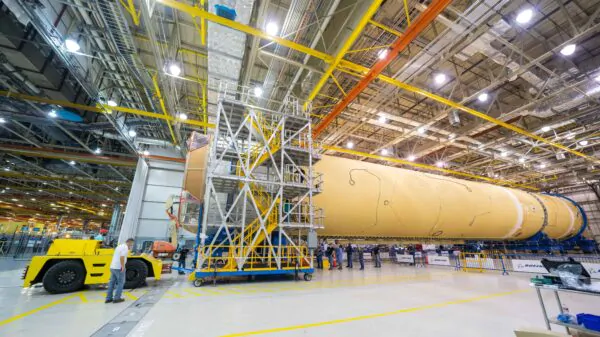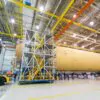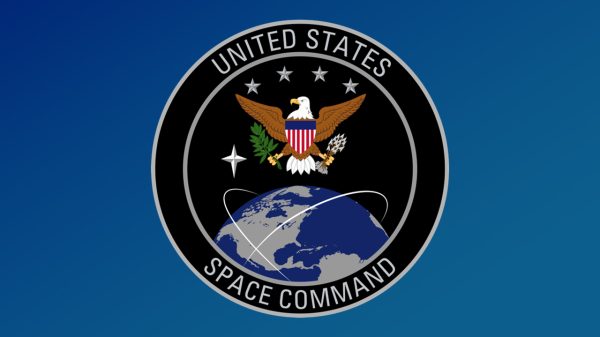By Brandon Moseley
Alabama Political Reporter
On Thursday, October 9 NASA released a detailed outline of their plan to take the U.S. and mankind to the planet Mars. The new report is titled, “NASA’s Journey to Mars: Pioneering Next Steps in Space Exploration.”
NASA Administrator Charles Bolden said in a statement, “NASA is closer to sending American astronauts to Mars than at any point in our history. Today, we are publishing additional details about our journey to Mars plan and how we are aligning all of our work in support of this goal. In the coming weeks, I look forward to continuing to discuss the details of our plan with members of Congress, as well as our commercial and our international and partners, many of whom will be attending the International Astronautical Congress next week.”
The Associate Administrator for Human Exploration and Operations William Gerstenmaier said, “NASA’s strategy connects near-term activities and capability development to the journey to Mars and a future with a sustainable human presence in deep space. This strategy charts a course toward horizon goals, while delivering near-term benefits, and defining a resilient architecture that can accommodate budgetary changes, political priorities, new scientific discoveries, technological breakthroughs, and evolving partnerships.”
NASA said in the statement that there are three stages of work involved in this effort. First Earth Reliant exploration is focused on research aboard the International Space Station. NASA and its international partners are using this world-class microgravity laboratory to test technologies and advance human health and performance research that will enable deep space, long duration missions.
NASA’s plan involves operating in cislunar space—the volume of space around the moon featuring multiple possible stable staging orbits for future deep space missions. NASA will use future missions to advance and validate capabilities required for humans to live and work at distances much farther away from our home planet, such as at Mars.
The plan is to eventually human missions beyond the Earth and the moon to the Mars vicinity, possibly to low-Mars orbit or one of the Martian moons, and eventually the Martian surface itself.
NASA said that future Mars missions will represent a collaborative effort between NASA and its partners—a global achievement that marks a transition in humanity’s expansion as we go to Mars to seek the potential for sustainable life beyond Earth.
NASA said that they are focused on pieces of the architecture that we know are needed. In parallel, we continue to refine an evolving architecture for the capabilities that require further investigation. These efforts will define the next two decades on the journey to Mars.
NASA acknowledged that living and working in space require accepting risks; but argues that the journey to Mars is worth the risks. They are estimating that they will need the ability to keep a crewed mission in space for up to 1100 days at a time.
NASA said that with the Space Launch System, Orion crewed spacecraft, and revitalized space launch complex, they are developing the core transportation capabilities needed for the journey to Mars while ensuring continued access for our commercial crew and cargo partners to maintain operations and stimulate new economic activity in low-Earth orbit. This secured U.S. commercial access to low-Earth orbit allows NASA to continue leveraging the station as a microgravity test bed while preparing for missions in the proving ground of deep space and beyond.
The Asteroid Redirect Mission (ARM) will demonstrate an advanced solar electric propulsion capability that will be a critical component of NASA’s journey to Mars and will provide an unprecedented opportunity for us to validate new spacewalk and sample handling techniques as astronauts investigate an asteroid. NASA said that the mission could also potentially open new scientific discoveries about the formation of our solar system and beginning of life on Earth
NASA said that 40 years of robotic missions on and around Mars have returned vital data about the Martian environment, helping us understand what challenges we may face and resources we may encounter. The revolutionary Curiosity sky crane placed nearly one metric ton – about the size of a small car – safely on the surface of Mars. However NASA said that they will need to be able to land at least 10 times that weight with a human mission and then be able to get them off the surface.
NASA said that these challenges are solvable and NASA is working on the solutions every day. Huntsville’s Marshall Space and Rocket Center has been and continues to be vital to the NASA effort to explore space.
The plan to Mars can be read online at: http://go.nasa.gov/1VHDXxg





















































